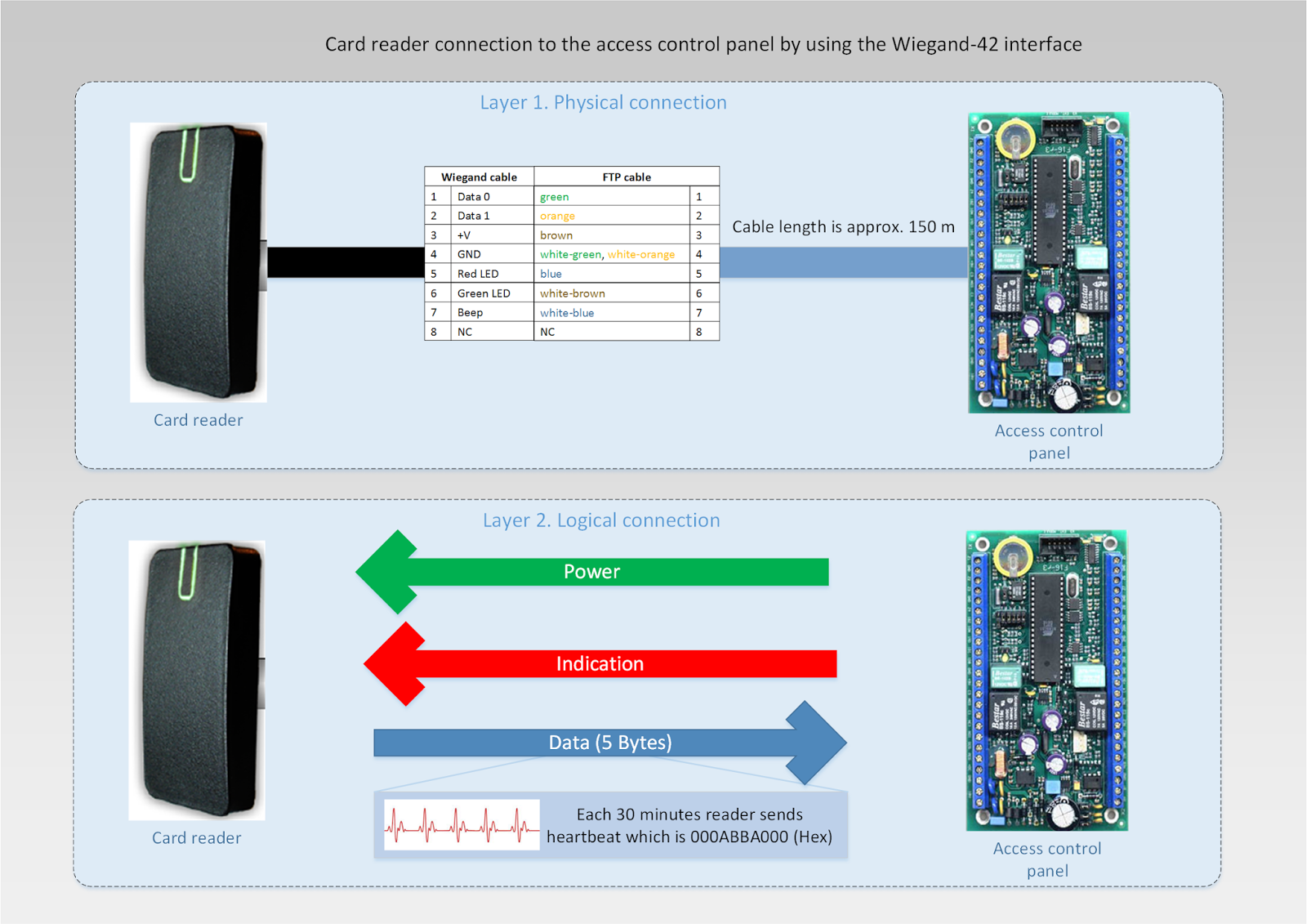A Wiegand interface is the most popular interface between RFID-reader and access control panel.
This legacy interface has many modifications but the one thing that is important: how many bytes a reader will send to the access control panel. It could be 3 bytes (Wiegand-26), 5 bytes (Wiegand-42) and even 7 bytes.
The most popular Wiegand interface is 26. And by getting just 3 bytes from the reader wouldn't be enough to have a strong security access control system. Many domestic manufacturers (and even foreign ones) have still produced RFID-readers with just one Wiegand-26 interface unfortunately. Thanks goodness there is one domestic vendor which has programmable readers. Their interface can be set up as Wiegand-42, so reader can send 5 bytes of code to the access panel.
Some installers don’t pay attention to the physical connection between reader and access panel. According to the reader's manual the right cable has to be selected. The FTP-cable would be the right choice. Wiegand's DATA lines have to be connected with the different twisted pairs (1 and 2). Their free twisted pairs have to be connected to the ground line (4).
The Wiegand interface is unidirectional. It means that data is transfered in one direction only: from reader to the access panel. So access panel waits for a code on the line. If code is absent it means that there is no card near the reader or the reader is dead or the line is corrupted. To solve this problem in this way I asked one vendor to make a new firmware for its reader and now it sends each half an hour a "heart beat" code. The access panel by getting this code generates DENY sound via reader's BEEP line. To mute this noisy and confusing sound, the reader disables its BEEP line for a few seconds after heart beat code has been sent.
I love Swedish pop group ABBA and that code is 000ABBA000 (Hex). ACS log analyzer operates with this code and informs Security Officer in case of troubles with it.
As I said before Wiegand interface is obsolete. Nowadays the new, secure and reliable protocol has been introduced. It is OSDP. I hope many worldwide access control vendors will support it.

No comments:
Post a Comment